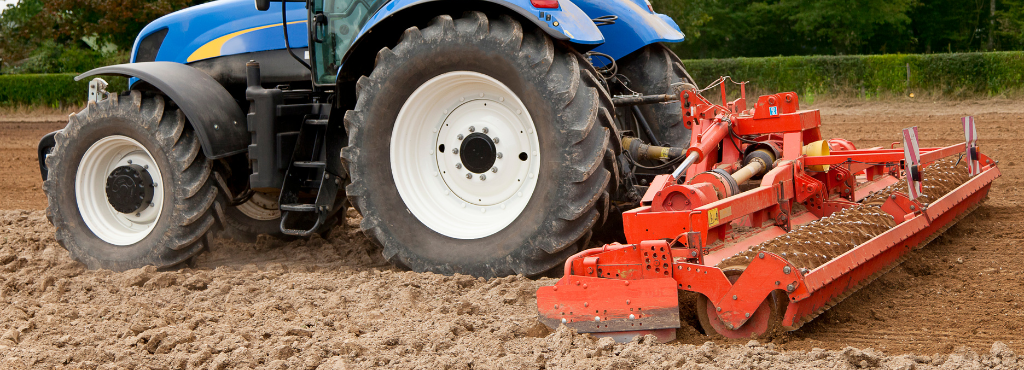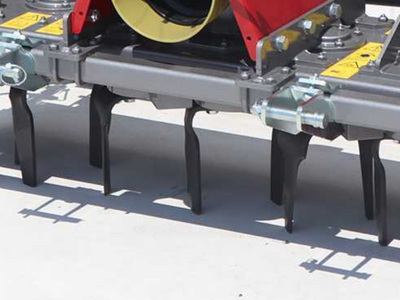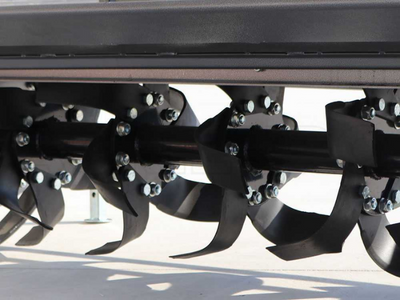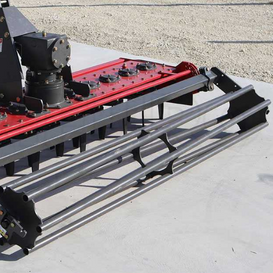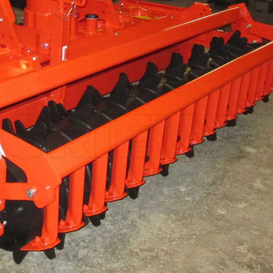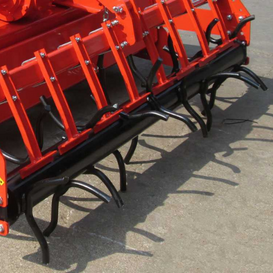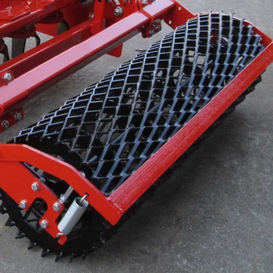The Complete Guide to help you choose the Best Power Harrows
by the Real Experts of Tractor-towed Agricultural Machinery
CONTENTS
1. Introduction
The power harrow is a piece of machinery used in the preparation of the seed bed, which relies on a cutting unit with tines that make a rotating and vertical movement to break up the earth clumps.
It is mainly used on farms where tillage is still performed traditionally by ploughing. After tilling with a plough, the soil is left with large clods of earth that need to be further crushed; if alternative methods to ploughing, such as subsoiling, are used, this need is greatly reduced. In this case, the use of a disc harrow may be sufficient for the purpose.
The power harrow is also characterised by the possibility of being operated in combination with a mechanical or pneumatic seeder. This is also why it is recommended to use the equipment on soils with low presence of stones, although still particularly hard and loamy. In addition, when using the combined configuration with the seeder attachment, it is best to be even more careful than usual and work when the soil is temperate: excessive soil moisture would not only make the power harrow operation more tiring, but may also lead to clogging the holes on the seed plates.

2. The main components of a power harrow
The machine works by means of a central transmission connected to a gearbox that imparts a rotary motion to the internal geared system, which in turn transfers the same motion to the cutting unit with tines below. The tines rotate in opposite directions, i.e. alternately rotating one clockwise and the other anti-clockwise. This type of action causes the tines to work thoroughly on the clods, crushing them and creating the right conditions for the seeds to germinate.
Some power harrows are equipped with a height-adjustable crumbling bar placed between the rotating elements and the roller: setting the bar at different heights ensures that the sod, once passed between the tines, does not immediately fall out and is instead ground several times to obtain an even finer seed bed.
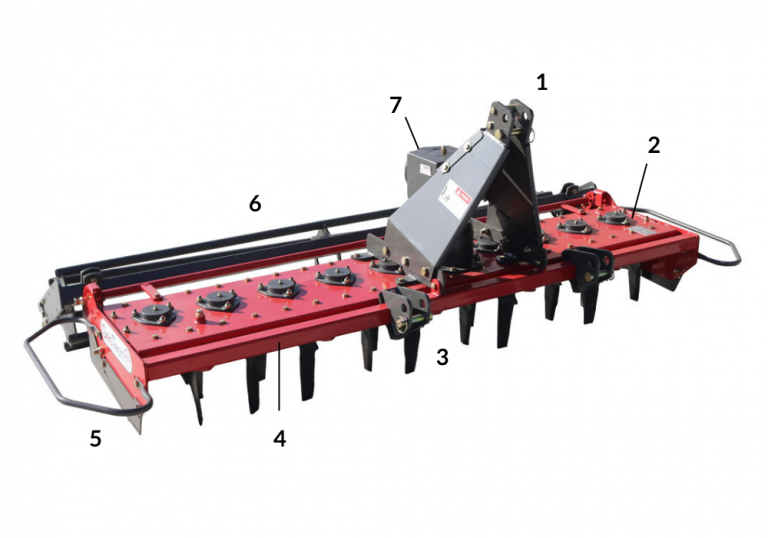
- Three-point hitch
- Tine holders
- Tines (double tines unit, welded on discs)
- Frame
- Side protections (adjustable, they allow for smooth and uniform soil tillage and prevent clods from falling off the working surface)
- Rear roller
- Transmission gearbox (it ranges between 1000 or 540 rpm depending on the type)
3. Soil tillage: harrowing
The power harrow is a tool for soil overturning used in refinement works, namely those processes that are necessary for the preaparation of seed bed for sowing. It is a machine mainly used in extensive farming, i.e. the cultivation method applied over large areas but with a lower harvest per unit, meaning that even if the production per hectare is low, it is still balanced by the large surface area worked. Alongside this, the power harrow is also used for weed control in vineyards and orchards.
The quality of the work performed by the power harrow depends on various factors, including:
- the physical properties of the soil;
- the soil moisture content;
- the working parts: the tines must be replaced if showing signs of wear and tear (such as reduced size and a less sharp tine edge), otherwise the soil refinement quality and harrowing performance will be affected;
- the speed of movement: being driven by the tractor PTO, a lower speed results in higher efficiency, whereas in the case of mounted harrows, efficiency increases with higher speed;
- timing: it is important to wait some time between ploughing (or subsoiling) and harrowing because the clods must be given time to break up under the elements.
This machine differs from other harrow types because the working parts are not operated by machine dragging, but through a rotary and mechanical movement given by the tractor’s power take-off. The circular, horizontal movement of the tines is also what makes a power harrow different from a tractor-mounted rotary tiller: soil tillage performed with the harrow hardly leads to the formation of a plough slab, i.e. a compact layer of soil that forms when working at the same depth all the time. This soil phenomenon manifests itself more frequently when using a rotary tiller, given the vertical and forward movement of the hoes.

Power harrow tines 
Rotary tiller hoes
4. Types
An essential feature of the power harrow is the rear roller, which is used to compact the soil, making it as level as possible, in order to make it easier for the seeder to work effectively and to adjust the working height which is within the first 5-10 cm. There are several types of rollers, both height and depth adjustable by manual or hydraulic system, depending on the effect and compactness desired and the type of soil:

Cage roller 
Packer roller 
Spike roller 
Mesh roller
Another important distinction to be made concerns the sturdiness (or series) of the equipment, which can be classified as follows:
| Sturdiness/series | Maximum power: |
|---|---|
| Ultra-light series | 25 to 40 Hp |
| Light series | 40 to 60 Hp |
| Medium series | 65 to 85 Hp |
| Heavy series | 90 to 100 Hp |



